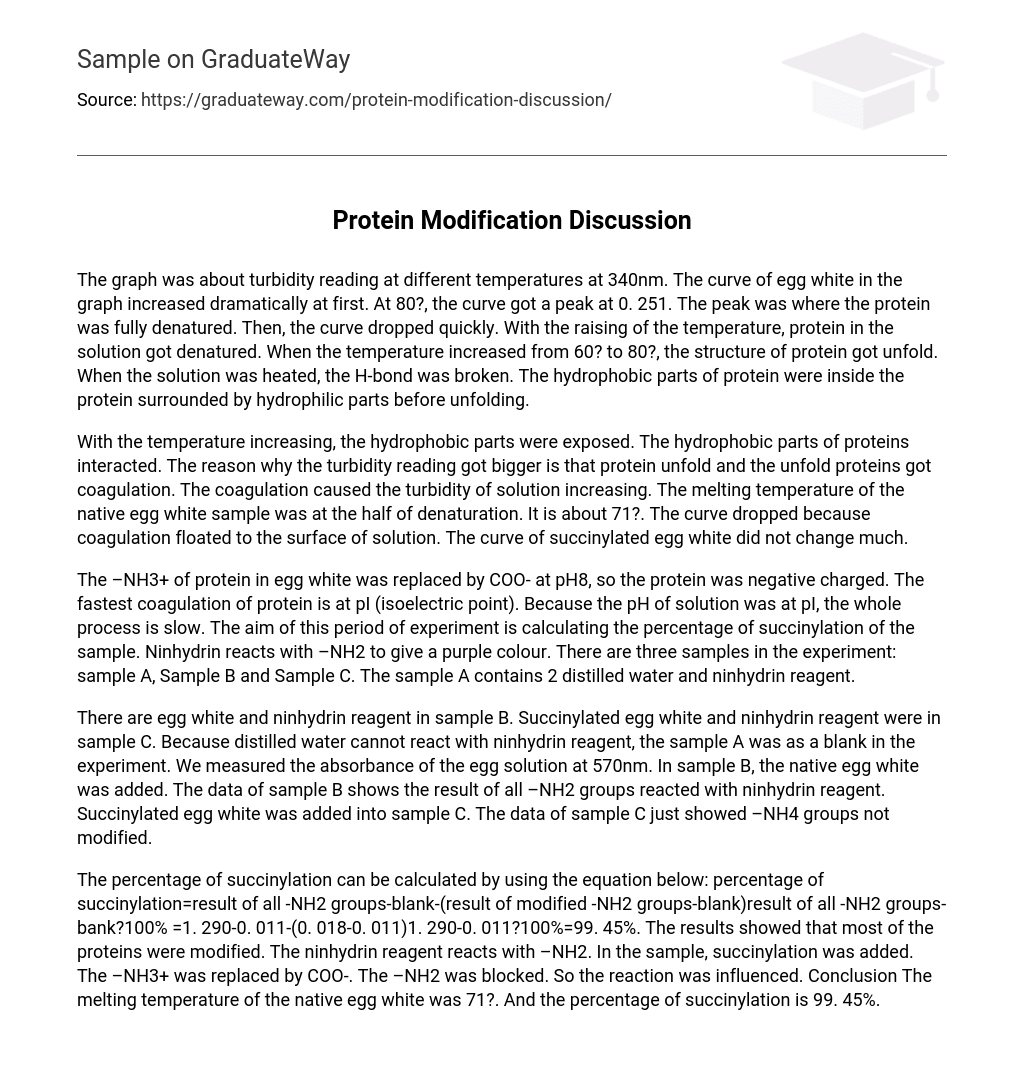The graph was about turbidity reading at different temperatures at 340nm. The curve of egg white in the graph increased dramatically at first. At 80?, the curve got a peak at 0. 251. The peak was where the protein was fully denatured. Then, the curve dropped quickly. With the raising of the temperature, protein in the solution got denatured. When the temperature increased from 60? to 80?, the structure of protein got unfold. When the solution was heated, the H-bond was broken. The hydrophobic parts of protein were inside the protein surrounded by hydrophilic parts before unfolding.
With the temperature increasing, the hydrophobic parts were exposed. The hydrophobic parts of proteins interacted. The reason why the turbidity reading got bigger is that protein unfold and the unfold proteins got coagulation. The coagulation caused the turbidity of solution increasing. The melting temperature of the native egg white sample was at the half of denaturation. It is about 71?. The curve dropped because coagulation floated to the surface of solution. The curve of succinylated egg white did not change much.
The –NH3+ of protein in egg white was replaced by COO- at pH8, so the protein was negative charged. The fastest coagulation of protein is at pI (isoelectric point). Because the pH of solution was at pI, the whole process is slow. The aim of this period of experiment is calculating the percentage of succinylation of the sample. Ninhydrin reacts with –NH2 to give a purple colour. There are three samples in the experiment: sample A, Sample B and Sample C. The sample A contains 2 distilled water and ninhydrin reagent.
There are egg white and ninhydrin reagent in sample B. Succinylated egg white and ninhydrin reagent were in sample C. Because distilled water cannot react with ninhydrin reagent, the sample A was as a blank in the experiment. We measured the absorbance of the egg solution at 570nm. In sample B, the native egg white was added. The data of sample B shows the result of all –NH2 groups reacted with ninhydrin reagent. Succinylated egg white was added into sample C. The data of sample C just showed –NH4 groups not modified.
The percentage of succinylation can be calculated by using the equation below: percentage of succinylation=result of all -NH2 groups-blank-(result of modified -NH2 groups-blank)result of all -NH2 groups-bank?100% =1. 290-0. 011-(0. 018-0. 011)1. 290-0. 011?100%=99. 45%. The results showed that most of the proteins were modified. The ninhydrin reagent reacts with –NH2. In the sample, succinylation was added. The –NH3+ was replaced by COO-. The –NH2 was blocked. So the reaction was influenced. Conclusion The melting temperature of the native egg white was 71?. And the percentage of succinylation is 99. 45%.





